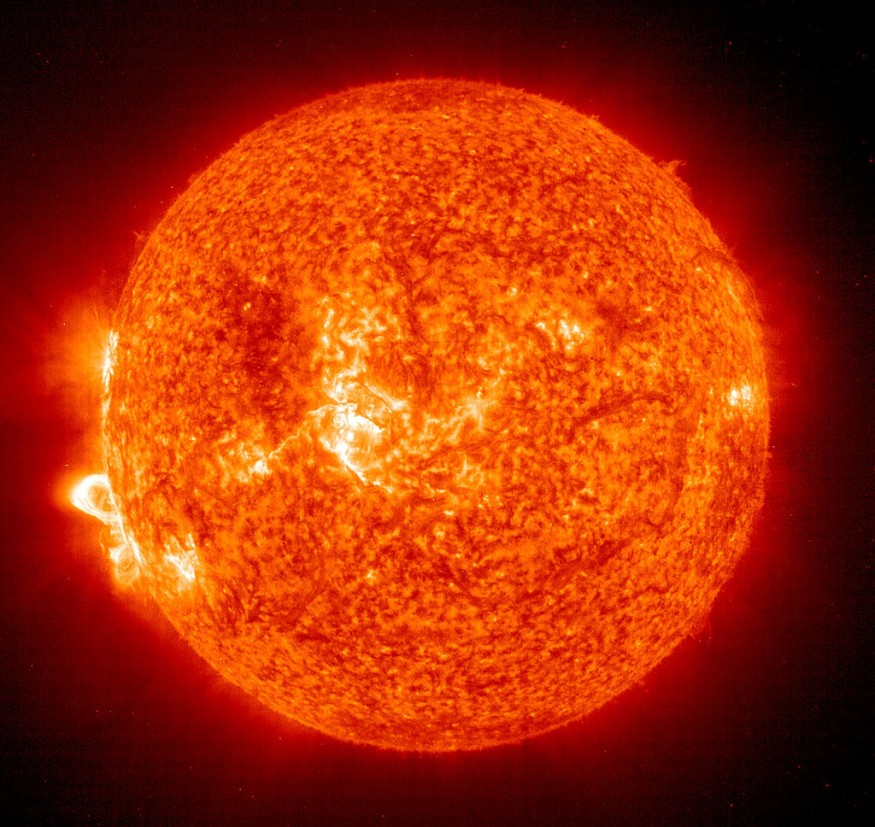A geomagnetic storm is traveling toward Earth and is expected to hit the planet either on Wednesday, April 6, or Thursday, April 7.
This magnetic storm originated from a coronal mass ejection (CME) due to a solar storm on Sunday, April 3.
Geomagnetic Storm Watch

The National Oceanic and Atmospheric Administration (NOAA) - Space Weather Prediction Center (SWPC) has issued an ongoing G1 (minor) geomagnetic storm watch for Wednesday and Thursday.
The G1 classification is out of the five-level scale that the NOAA developed to quantify the storm's impact.
The solar storm or CME originated from a filament eruption from the Sun's outer atmosphere facing Earth on Sunday.
Also Read: Solar Storm Alert: Fresh Geomagnetic Storm Warning Issued, Earth Expected to be Hit on Thursday
Geomagnetic Storm Level
A G1-class geomagnetic storm will not affect human health on the Earth's surface but it will cause a relatively minor disruption to power grid fluctuations and satellite operations, according to the NOAA - SWPC, as cited by Fox Weather news.
Furthermore, a G1 geomagnetic storm hitting Earth is likely to cause aurora borealis or northern lights in the northern hemisphere. In particular, the Northern United States, Canada, Eastern Russia, and Greenland may experience the phenomenon.
The G1 (minor) category is the weakest among the NOAA's five-level scale of geomagnetic storms.
The details of the other categories are indicated in the following:
- G5 (extreme) - the strongest yet most rare geomagnetic storm which can cause widespread voltage technical malfunction and result in blackouts due to the collapse of some grid systems. Transformers can also be damaged.
- G4 (severe) - satellite operations and satellite navigation can be disrupted for several hours, as satellite signals will also be interrupted when the magnetic storm hits Earth. The global positioning system (GPS) or satellite tracking may also be hampered.
- G3 (strong) - intermittent satellite and low-frequency radio navigation problems may occur. Magnetic waves from the storm may also trigger false alarms on some protection devices.
- G2 (minor) - damage on transformers and voltage alarms on the high-latitude power system. In addition, radio communication may also be disconnected at higher latitudes.
Disruption to Modern Technology
Some airlines and electric-grid operations were reportedly prompted to monitor the potential damage of the incoming magnetic storm within the next 48 hours.
This is due to the imminent impact of the storm on Earth's magnetic field or magnetosphere where signal and radio waves pass through.
The space weather storms not only affects satellites and power grid system but also pose a threat to people on aircraft and commercial planes that rely on GPS tracking and satellite communications to navigate their course and status.
In addition, geomagnetic storms can also disrupt the signal and internet connection of electronic devices, including desktop computers, laptops, mobile phones, and tablets.
The Carrington Event
The largest solar storm in recorded history is known as the Carrington Event which occurred in 1859.
The event was significantly strong that a geomagnetic storm caused the display of aurora borealis globally and caused fires in multiple telegraph stations worldwide.
Characterized by a megaflare or massive solar flare, anecdotal evidence even suggests that some US telegraph operators at that time reported electrical sparks from their equipment, according to space physicist Ed Cliver from the US Air Force Research Laboratory, as cited by National Geographic.
Solar Storm
The Sun is a hot ball of gas but it is also the site of one of our solar system's most violent space weather phenomena in the form of solar activities.
This dynamic is driven by the solar magnetic field-which is constantly moving and frequently results in solar storms or solar disturbances.
The National Aeronautics and Space Administration (NASA) states that solar storms may produce CMEs, solar flares, high-speed solar wind, and solar energetic particles.
These solar activities can produce a geomagnetic storm consisting of high-energized particles.
© 2026 NatureWorldNews.com All rights reserved. Do not reproduce without permission.





